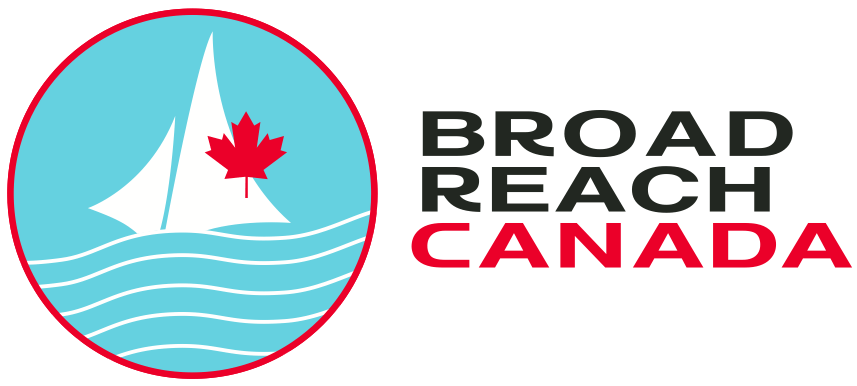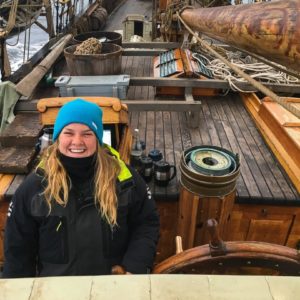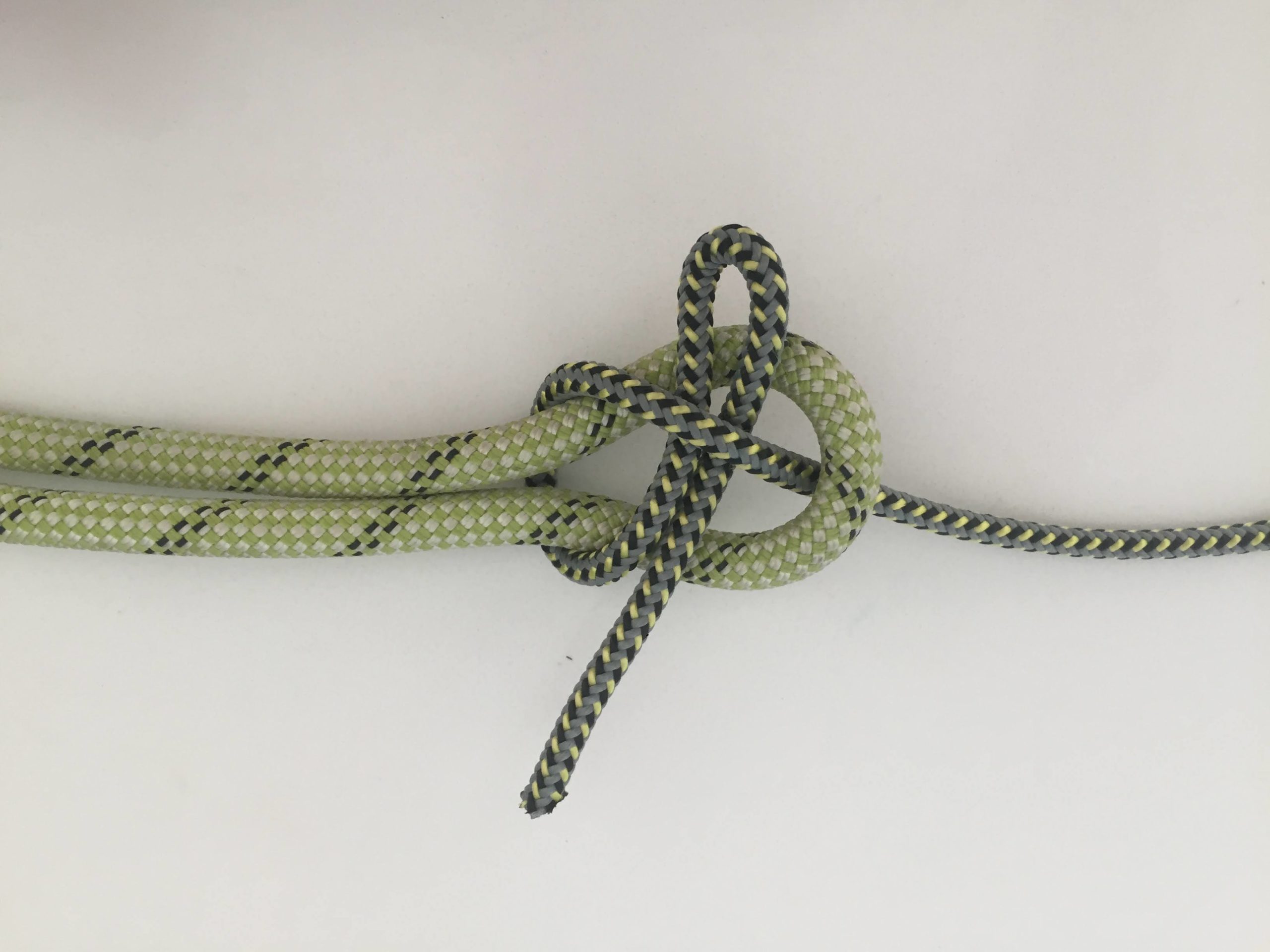It happens quite often where a beginner sailor steps on board a vessel for the first time and instantly falls in love. Can you blame them? What’s not to love? Nothing beats a life spent at sea, enjoying the fresh breeze and salty air. But how do we get there? How is it that we can turn our favourite pastime into a lifelong career? “People of the Sea” is a mini interview series that will answer just that. We’ve interviewed mariners from around the world and asked them for all their tips and tricks. We’re here to share this information with you because there’s nothing we’d like more than to see you out there enjoying the endless sea.
Interview conducted by Olivia Ferguson
What originally sparked your interest to go and pursue a career at sea?
I grew up along the northern Gulf of Mexico in coastal Mississippi and south eastern Louisiana, USA – an area characterized by sandy barrier islands, bayous, marshlands and large estuaries. My dad would take my brothers and I fishing here when we were kids – kilometers of marshland and estuaries built over thousands of years by sediment build up and flooding from the Mississippi River. Everything was new to me then, and the seemingly endless expanse of water and the wild and wonderful flora and fauna living in and around this area sparked my curiosity at an impressionable age. Then the Deepwater Horizon Oil spill happened – in time making me realize how fragile this coastal ecosystem is – so I went to college to study marine biology and renewable natural resources to try and protect these marine resources. I have a natural yearning for adventure as well. The first time we were out on my fathers fishing skiff, I wanted to go further and further out to sea. I have followed that yearning on and off since then, and I still have a lot of water to cover that I have yet to venture through.
How long have you been working at sea?
On and off for the past six years. I began supporting field biologists to collect data to support state management of coastal finfish, crustaceans, and sharks in state waters (up 9 miles south of the Mississippi Barrier islands) in 2014. This is long-term, annual sampling where I worked picking gill nets aboard skiffs and emptying trawls and long lines aboard larger vessels for days (up to a week) at a time at sea. I took a break to thru hike the Appalachian Trail from Georgia to Maine before working as a coastal fisheries technician for the state of Texas – doing similar fisheries work in support of managing commercially and recreationally important marine species in the Corpus Christi Bay and Gulf of Mexico around Mustang and San Jose’ Islands. Afterwards, I moved back to Louisiana to pursue a master’s degree, working out of skiffs in the Mississippi River Delta to support my research on blue crab population dynamics. Since then I have moved to Kodiak, Alaska, doing my best to stay on the water. I have been working aboard a 72’ landing craft the Supplier to deliver freight and fuel to remote villages, worksites, and lodges around the Kodiak archipelago. I have also worked a week at sea as a commercial fisherman aboard the Purse Seiner Emily Rose, pulling in Dungeness Crab pots. I was even lucky enough to get aboard a weeklong volunteer marine debris clean up trip around some of the smaller islands here out of an old tug boat called the Island C.
What type of vessels have you worked / volunteered on?
I have volunteered with the National Oceanic and Atmospheric Administration (NOAA, US Federal fisheries biologist and managers) aboard the Oregon II and the Gordan Gunther for a total of four weeks at sea. In Mississippi I worked aboard skiffs and research vessels including the 56’ R/V Jim Franks (long line), a 60’ catamaran, and the 100’ dragger converted research vessel R/V Tommy Monroe (bottom trawls). In Texas I worked aboard skiffs and the R/V Nueces, a 56’ shrimp trawler used for trawling and vertical longlines for Red Snapper in the Gulf of Mexico out of South Texas around San Jose’ and Mustang Island. In Louisiana I did my work on mud boats and a 22’ Boston Whaler. My personal favorite and perhaps the most charismatic boat I have worked aboard is the 72’ landing craft The Supplier: a Higgins boat built in New Orleans for the US Army in the late 50’s. This is the same type of vessel (and ship builder) used to transport troops to the beaches of Normandy for the Allied invasion (D-Day) in world war II, though the Supplier has since been equipped with a crane, a cabin, and a wheelhouse. The purse seiner Emily Rose (56’) was a great boat to work on. I also volunteered on a week long marine debris clean up trip aboard the Island C, an old 71’ tug boat turned into a mothership for bear viewing, hunting, marine debris clean-ups and scientific cruises here in Kodiak.
What is it about being on the ocean that you love so much?
A canvas for painting endless adventures. The vastness of it all. The incredible abundance and diversity of life that lives above and below the surface. The sheer power of waves, wind, and moving salt water. Growing up on the Gulf Coast I have been through quite a few damaging hurricanes. Google hurricane Katrina or hurricane Harvey. The Ocean provides an inexpensive mode of shipping that is advantageous for trade and economies at a global scale. Speaking of global scale, the thing literally connects everyone. We picked up marine debris on beaches here in the Gulf of Alaska originating from Russia, Japan, Korea, and China! Not to mention a large portion of the oxygen we breathe comes from photosynthesizing plankton living along its vast surface. And that isn’t even half of what our oceans do. You gotta respect that!
What is your favourite story / memory from being at sea?
I was out on a four day cruise aboard the R/V Tommy Monroe helping aboard as a scientist to assess fish populations in the Gulf of Mexico – collected data to better manage commercial and recreational fisheries in coastal and marine waters. Basically it’s a 100 ft dragger – we trawl at certain coordinates and identify/count/measure all marine species brought up in the nets. We were running 12 hour shifts with mine going until midnight. As soon as I finished my shift, the skipper cruised us right into a thundering squall. Lightning lit up the sky for seconds at a time – in time to see two water spouts dancing around each other like ballerinas locked in twirling pirouettes. Then darkness. BOOM. More lightning. The water spouts blew menacingly around and around, coming within a few hundred meters of the vessel before disappearing aft. I’ll never forget looking at those things, half delirious as I was – so destructive by nature – yet so graceful and beautiful as they twirled around one another. We were 100 miles south of Biloxi, Mississippi.
Do you have any tips for someone looking to pursue a career at sea?
Practice your knots, right? That has helped me tremendously crabbing for Dungies and hauling freight on the Supplier. Just keep chasing jobs that you enjoy, create relationships with people in the line of work you are interested in, let your intentions be known, apply yourself, and eventually it will work out. It helps to live near a port! Let others know what you intend to do. For example, if you want to get on a fishing vessel, walk the docks. Post on facebook pages. Talk to people in the bars. Be ready to be a beginner at something. I have been able to work several different jobs on boats, with everyone one of them quite different from the other. I have learned to stay humble, not to rush, and always be a team player. Lastly – don’t forget to feed your curiosity! Read books about what you want to do – sailing, ocean exploration, fishing, anything. I just finished In the Heart of the Sea, where I learned that I am glad that I am not a whaler. Either way, hold fast and never give up!



